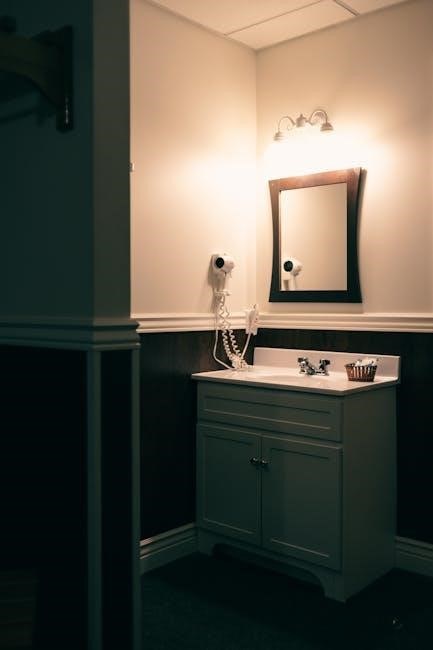
cabinet hardware guide
Cabinet hardware enhances both functionality and aesthetics, offering knobs, pulls, hinges, and drawer slides to elevate your space’s design while ensuring durability and ergonomic convenience;
1.1 What is Cabinet Hardware?
Cabinet hardware refers to the functional and decorative components installed on cabinets, drawers, and doors. These include knobs, pulls, hinges, drawer slides, and catches, designed to enhance both usability and aesthetics. Hardware serves as the interface between the user and the cabinet, providing easy access while contributing to the overall design. Available in various materials like brass, stainless steel, and ceramic, cabinet hardware offers a range of styles from classic to contemporary. Properly chosen hardware not only improves ergonomics but also adds a finishing touch to the space, reflecting personal taste and complementing the cabinet’s material and color. Its role is crucial in balancing functionality and visual appeal.
1.2 Importance of Cabinet Hardware in Home Design
Cabinet hardware plays a crucial role in both the functionality and visual appeal of a space. It serves as the primary interface between users and their cabinets, drawers, and doors, ensuring smooth operation. Beyond functionality, hardware significantly impacts the aesthetic, reflecting personal style and complementing the room’s decor. Knobs, pulls, and hinges can elevate a space from ordinary to extraordinary, offering a finishing touch that ties together the design. Properly selected hardware enhances ergonomics, ensuring comfort and convenience while preventing long-term damage to cabinets. Its importance lies in its ability to blend practicality with style, making it a key element in achieving a cohesive and visually appealing home design.
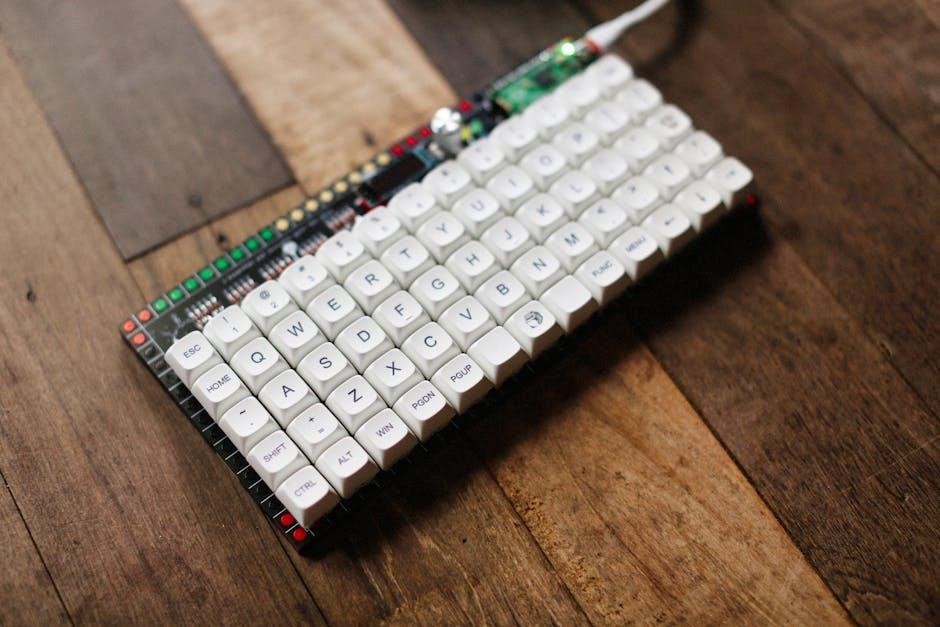
Types of Cabinet Hardware
Cabinet hardware includes knobs, pulls, hinges, and drawer slides, each serving unique functional and decorative purposes to enhance both accessibility and the visual appeal of cabinets.
2.1 Knobs
Cabinet knobs are compact, versatile hardware options that work well on most cabinet doors and smaller drawers. They come in various materials, such as brass, bronze, and glass, offering both functionality and style. Knobs are ideal for those who prefer a subtle, ergonomic grip, making them easy to use for people of all ages. Their small size allows for flexible placement, typically 2.5 to 3 inches from the bottom edge of upper cabinets for easy access. Available in classic, contemporary, and decorative designs, knobs can complement any kitchen or bathroom aesthetic, providing a timeless and practical solution for cabinet hardware needs.
2.2 Pulls
Cabinet pulls are elongated handles that provide a comfortable grip, making them ideal for larger drawers and cabinets. Available in styles like bar, recessed, and cup pulls, they offer versatility in design. Pulls are often preferred for their ergonomic benefits, especially on heavier doors or drawers, as they reduce strain. Made from materials such as metal, wood, or glass, pulls can complement various aesthetics, from modern to traditional. Their size and finish, such as chrome or bronze, can significantly impact the overall look of your space. Whether you’re aiming for a sleek, contemporary vibe or a classic appeal, pulls are a practical and stylish choice for enhancing cabinet functionality and design.
2.3 Hinges
Cabinet hinges are essential components that ensure smooth door operation and durability. They come in various types, including soft-close, concealed, and decorative options, catering to different design needs. Hinges are made from materials like brass, stainless steel, or zinc, offering strength and corrosion resistance. Soft-close hinges are particularly popular for their ability to dampen noise and prevent slamming, enhancing both functionality and user experience. Properly installed hinges maintain door alignment and longevity, while decorative options can add a touch of style. Whether for modern or traditional cabinetry, hinges play a crucial role in both performance and aesthetics, ensuring doors open and close effortlessly for years to come.
2.4 Drawer Slides
Drawer slides are crucial for ensuring smooth and efficient drawer operation, providing stability and durability. Available in various materials like steel or aluminum, they offer different load capacities to suit heavy or lightweight drawers. Soft-close slides are a popular choice, reducing noise and preventing slamming. Proper installation is key to avoid misalignment, with tools like drill guides aiding precision. Drawer slides not only enhance functionality but also contribute to the overall aesthetic by maintaining drawer alignment. Regular maintenance, such as cleaning and lubricating, ensures optimal performance. With options ranging from basic to advanced features, drawer slides are a fundamental component in modern cabinetry design, blending practicality with style.
Choosing the Right Cabinet Hardware
Selecting cabinet hardware involves balancing style, functionality, and proportion, ensuring knobs, pulls, and hinges complement your space while meeting practical needs for durability and ease of use.
3.1 Knobs vs. Pulls: Which is Right for You?
Choosing between knobs and pulls depends on personal preference, cabinet style, and functionality. Knobs are compact and versatile, ideal for smaller doors and drawers, offering a sleek, minimalist look. Pulls, with their elongated design, provide a better grip, making them perfect for larger cabinets and drawers. They also add a modern touch to contemporary spaces. Mixing both can create layered interest, but ensure consistency in style and finish to maintain a cohesive design. Consider ergonomic needs, as pulls are easier to grasp, especially for those with mobility issues. Ultimately, the decision should align with your kitchen or bathroom’s aesthetic and functional requirements.
3.2 Mixing Hardware Types for Layered Interest
Mixing hardware types adds depth and visual appeal to your space. Combining knobs, pulls, and other elements creates a layered look that reflects personal style. Start with a dominant hardware type, like pulls for drawers, and accent with knobs on doors for contrast. Ensure consistency in finish and style to avoid clutter. For example, pair modern brass pulls with subtle knobs for a balanced aesthetic. This approach works well in kitchens and bathrooms, allowing functionality and design to coexist seamlessly. Experiment with proportions and placements to achieve a harmonious blend that enhances your cabinetry’s overall appearance while maintaining practicality. This technique keeps the design engaging without overwhelming the senses.
3.3 Proportional Hardware Size for Cabinets
Proportional hardware size is crucial for a cohesive look. Choose hardware that aligns with the scale of your cabinets and drawers. For smaller cabinets, opt for compact knobs or small pulls, while larger drawers may require longer pulls or double hardware for balance. Generally, hardware for upper cabinets should be 5-7 inches in length, while lower cabinets may need larger sizes for a contemporary feel. Consider the door or drawer size—wider drawers often benefit from two pulls for ergonomic access. Ensure the hardware size complements the cabinet material and style, avoiding oversized or undersized pieces that disrupt the design harmony. Proper proportion enhances functionality and aesthetics, making your space visually appealing and user-friendly.
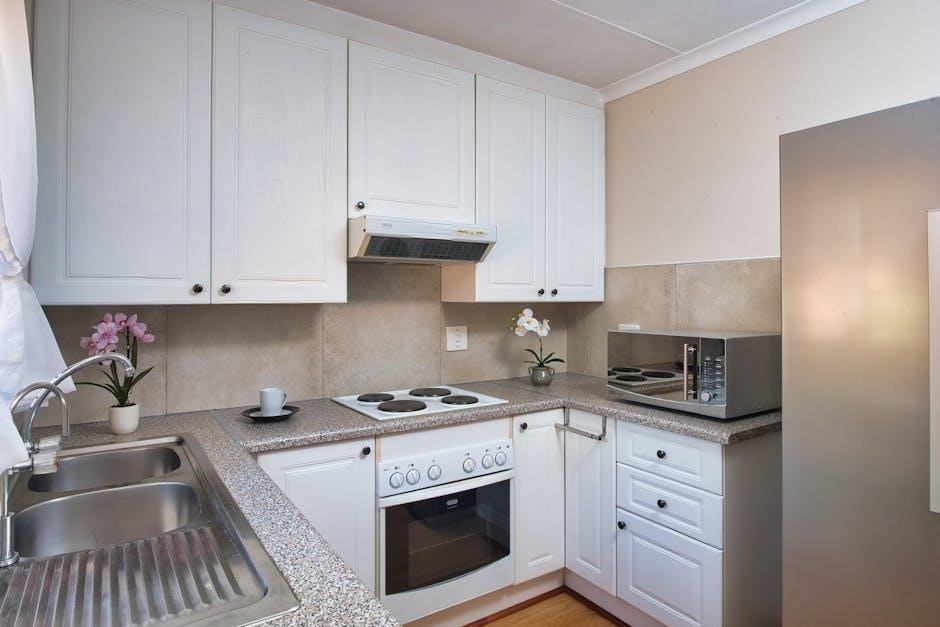
Cabinet Hardware Placement Guidelines
Proper hardware placement ensures functionality and style. Position knobs and pulls 2.5-3 inches from edges for ergonomic access. Align hardware consistently across cabinets for a cohesive design.
4.1 Upper Cabinets: Knobs or Pulls Placement
For upper cabinets, hardware placement focuses on accessibility and visual balance. Knobs or pulls are typically installed 2.5 to 3 inches from the bottom edge of the door. This standard ensures ergonomic comfort, making it easy to open doors without straining. The height placement also creates a clean, symmetrical look across the cabinet fronts. Choosing between knobs and pulls depends on the desired aesthetic—knobs offer a classic touch, while pulls provide a modern, streamlined appearance. Consistency in hardware type and placement across all upper cabinets is key to achieving a cohesive design that enhances both functionality and visual appeal.
4.2 Lower Cabinets: Ergonomic Hardware Positioning

Lower cabinets require hardware placement that prioritizes comfort and ease of access. Typically, knobs or pulls are positioned 2 to 3 inches from the top edge of the door or drawer, ensuring minimal bending. This ergonomic positioning reduces strain and makes it easier to open heavy drawers or doors. For drawers, pulls are often centered horizontally, while knobs may be slightly offset for better grip. Handles on larger drawers or deep cabinets benefit from bar-style pulls, offering a secure grasp. Consistency in hardware style and placement across all lower cabinets creates a cohesive look while maintaining functionality. This approach ensures practicality and aesthetic harmony.
4.3 Drawer Hardware Placement: One vs. Two Pulls
Drawer hardware placement depends on size and style preferences. For small to medium drawers, a single pull centered on the drawer front offers a clean, balanced look. This is ideal for narrower drawers, as it avoids overcrowding. Larger drawers often benefit from two pulls, spaced evenly apart, providing better grip and distribution of weight. The decision also considers the drawer’s width and design—wider drawers may require two pulls for ergonomic handling. Additionally, two pulls can add a decorative touch, enhancing the overall aesthetic. Ultimately, the choice between one or two pulls should balance functionality and visual appeal, ensuring seamless integration with the cabinet design;
4.4 General Tips for Hardware Placement
Proper hardware placement ensures both functionality and aesthetic appeal. Start by measuring from the edge of the cabinet or drawer to determine the optimal position. For knobs and pulls, a distance of 2.5 to 3 inches from the bottom or top edge is common. Align hardware symmetrically on adjacent cabinets for a cohesive look. Consider the size of the hardware relative to the cabinet—larger cabinets may require bigger pulls. Ensure ergonomic accessibility by placing handles at a comfortable height. Finally, maintain consistency in style and finish across all hardware to create a unified design. These guidelines help achieve a balanced and visually pleasing result.
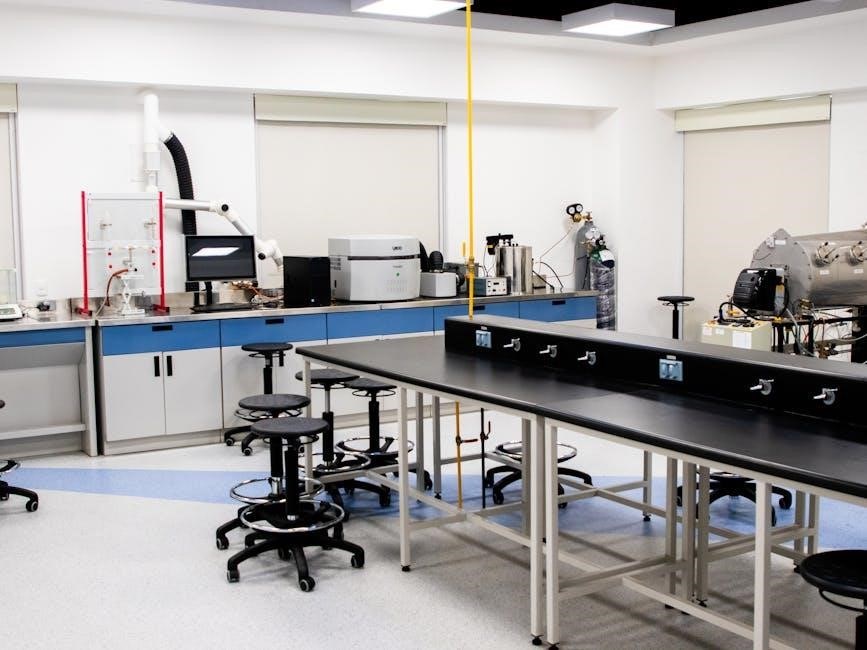
Installation Tips for Cabinet Hardware
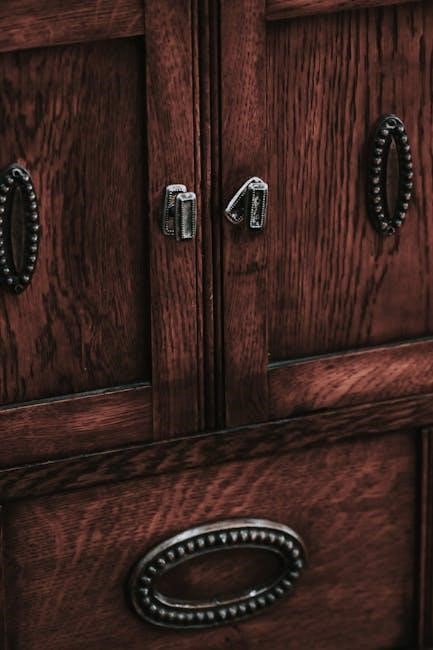
Use a drill guide for precise hardware alignment. Employ professional tools to ensure secure mounting. Avoid common mistakes by measuring twice before drilling for accurate results.
5.1 Using a Drill Guide for Precision
A drill guide is essential for precise hardware installation, ensuring accurate hole alignment and minimizing errors. By clamping the guide onto the cabinet door or drawer, you achieve consistent spacing and proper positioning. This tool is particularly useful for aligning knobs, pulls, and hinges, guaranteeing a professional finish. Measure carefully before securing the guide to avoid misalignment. For repeated installations, set the guide once and reuse it, maintaining uniformity across all cabinets. A drill guide not only saves time but also enhances the overall quality of the installation, ensuring hardware functions smoothly and looks cohesive in your space. Invest in a durable guide made of metal or sturdy plastic for long-term use.
5.2 Professional Installation Tools and Techniques
Professional installation of cabinet hardware requires specialized tools and refined techniques to ensure precision and durability. A router milling guide or multifunctional jig is often used to create precise grooves and alignments, while a drill guide block helps in accurately positioning hardware holes. High-quality drill bits and screwdrivers are essential for clean, damage-free installation. Experts also use clamps to hold components in place, ensuring proper alignment. Techniques include pre-drilling pilot holes to prevent splitting, using templates for consistent spacing, and applying even pressure to avoid misalignment. Following manufacturer guidelines and double-checking measurements are critical for a flawless finish. Investing in these tools and mastering the techniques ensures professional-grade results, enhancing both functionality and aesthetics of your cabinetry. Properly executed installation prolongs hardware longevity and maintains a polished appearance.
5.3 Avoiding Common Mistakes in Hardware Installation
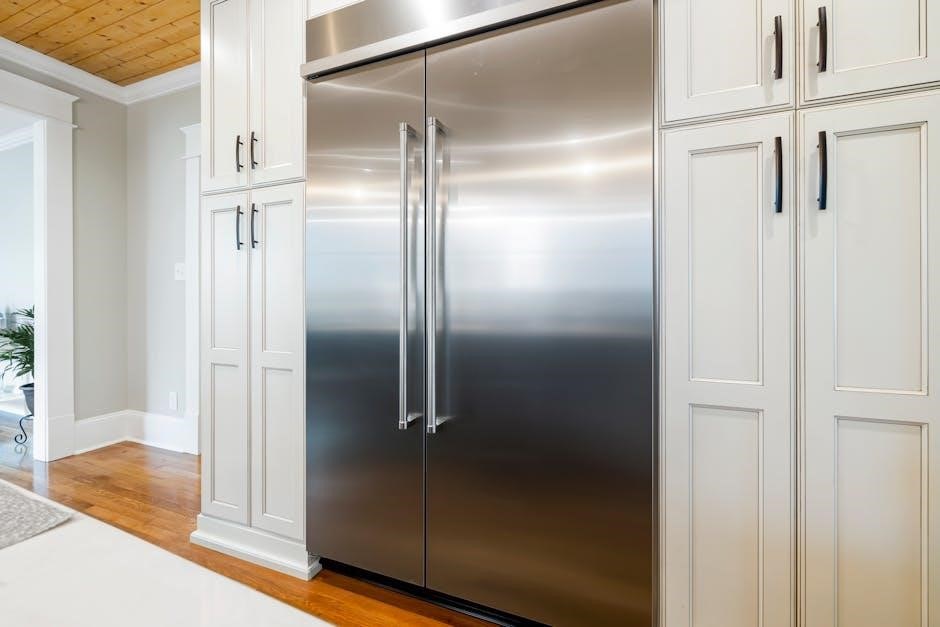
Avoiding common mistakes during cabinet hardware installation ensures a polished and functional result. One frequent error is misaligning knobs or pulls, which can make the design look unprofessional. To prevent this, use a drill guide or template to mark hole positions accurately. Another mistake is measuring incorrectly, leading to uneven spacing or hardware that doesn’t fit properly. Always double-check measurements before drilling. Additionally, using the wrong drill bit size can result in oversized holes, causing hardware to loosen over time. Forging ahead without pilot holes may split the material, especially in softer woods. Finally, neglecting to tighten screws evenly can lead to wobbly handles or pulls. By addressing these pitfalls, you can achieve a seamless and durable installation.
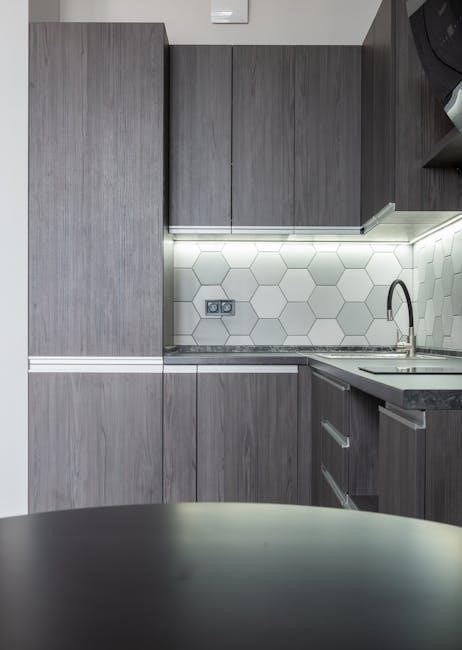
Style and Design Considerations
Cabinet hardware offers a wide range of styles, from classic to contemporary, allowing homeowners to complement their decor while balancing functionality and aesthetic appeal for a cohesive look.
6.1 Classic vs. Contemporary Hardware Styles
Cabinet hardware styles range from classic to contemporary, offering diverse options to suit various interiors. Classic styles, such as ornate knobs and traditional pulls, evoke timeless elegance with intricate details and warm finishes like brass or bronze. Contemporary designs, including sleek, minimalist pulls and knobs, emphasize clean lines and modern materials like chrome or stainless steel. While classic hardware often complements traditional cabinetry, contemporary styles align with modern aesthetics, creating a streamlined look. Both options allow homeowners to express their personal taste while enhancing functionality. Mixing styles can also create a unique, layered design, blending the sophistication of classic elements with the freshness of contemporary trends for a cohesive yet distinctive appearance.
6.2 Matching Hardware with Cabinet Material and Color
Matching cabinet hardware with the material and color of your cabinets ensures a cohesive and polished look. For example, brass or gold hardware complements warm wood tones like oak or walnut, while chrome or stainless steel pairs well with sleek, modern materials such as white lacquer or glass. Consider the finish of your cabinets—matte hardware works best with flat finishes, while polished hardware enhances glossy surfaces. Additionally, the color of the hardware should align with other fixtures in the room, such as faucets or lighting, to create a unified aesthetic. Coordinating these elements ensures the hardware enhances the overall design without clashing, achieving a balanced and harmonious space.
6.3 Budget-Friendly vs. High-End Hardware Options
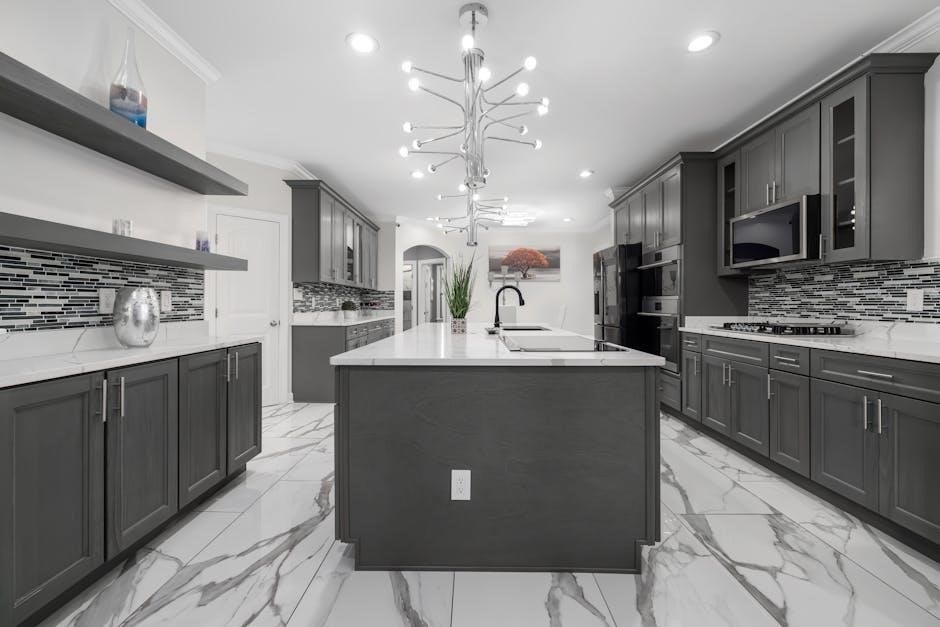
Cabinet hardware options vary significantly in price, catering to different budgets and preferences. Budget-friendly choices, such as zinc or aluminum hardware, offer durability and style at an affordable cost, making them ideal for large-scale projects. High-end options, like solid brass or designer finishes, provide premium quality and a luxurious aesthetic, often featuring intricate designs and superior craftsmanship. While high-end hardware may offer better longevity, budget-friendly alternatives can still elevate a space with modern looks; The choice depends on your priorities—whether you value long-term durability, a high-end appearance, or cost efficiency. Both options can seamlessly complement your cabinet material and color, ensuring a polished finish tailored to your needs and budget.
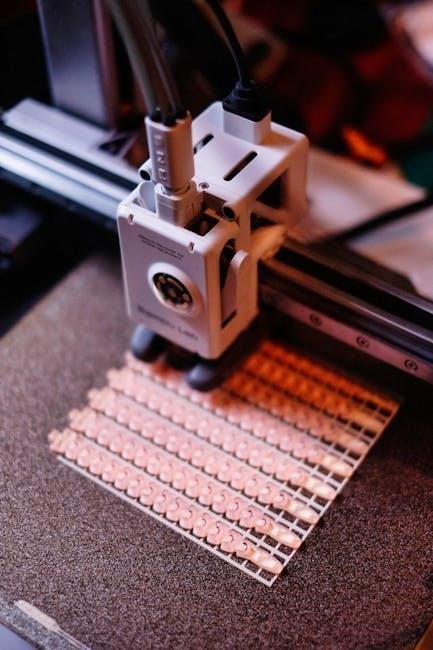
Maintenance and Repair of Cabinet Hardware
Regular cleaning with mild solutions prevents dirt buildup, while polishing restores shine. Damaged hardware should be repaired or replaced promptly to maintain functionality and aesthetic appeal.
7.1 Cleaning and Polishing Cabinet Hardware
Cleaning and polishing cabinet hardware is essential for maintaining its appearance and longevity. Use a mild soap solution and a microfiber cloth to wipe down knobs, pulls, and hinges, avoiding harsh chemicals that can damage finishes. For metal hardware, apply a metal polish using a soft cloth to restore shine. Regular cleaning prevents dirt buildup and tarnishing. For hinges, lubricate with silicone-based spray to ensure smooth operation. Avoid abrasive materials that can scratch surfaces. Polishing regularly keeps hardware looking new and prevents corrosion. Always test cleaning products on a small, inconspicuous area first to ensure compatibility with the hardware material.
- Use mild soap and microfiber cloths for routine cleaning.
- Apply metal polish for restoring shine on metallic surfaces.
- Lubricate hinges with silicone spray for smooth function.
- Avoid harsh chemicals and abrasive materials.
7.2 Repairing or Replacing Damaged Hardware
Damaged cabinet hardware can compromise both functionality and aesthetics. Inspect knobs, pulls, and hinges for wear or damage. Tighten loose screws or hinges to ensure stability. For faulty components, replace them with identical or compatible parts. Lubricate squeaky hinges with silicone spray to restore smooth operation. If hardware is beyond repair, consider replacing it entirely. Align new hardware carefully to match existing holes or drill new ones if necessary. For intricate repairs, consult a professional to avoid further damage. Regular maintenance and prompt repairs extend the lifespan of your cabinet hardware, ensuring it continues to function effectively and enhance your space’s design.
- Tighten loose screws or hinges for stability.
- Replace faulty parts with compatible hardware.
- Lubricate squeaky hinges with silicone spray.
- Seek professional help for complex repairs.